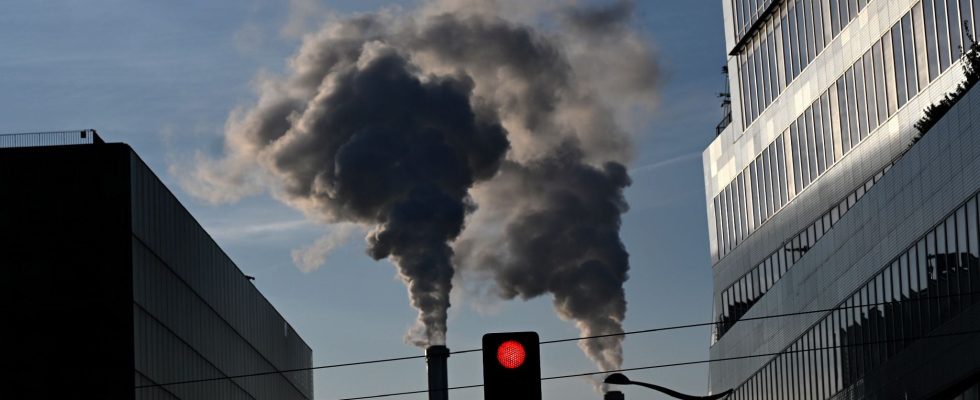Massively develop solar energy, offshore wind power, nuclear power, but also “control consumption”: the government presents its draft energy strategy, intended to “get France out of its dependence on fossil fuels”. This “French Strategy for Energy and Climate” (SFEC), a 102-page document, which must be posted online, this Wednesday, November 22, for public consultation, until December 15. It will be integrated into a law on energy production expected at the beginning of 2024. Its main features were known since the speech on energy delivered in February 2022 in Belfort by Emmanuel Macron. Two laws at the start of 2023 on the “acceleration” of nuclear power and renewable energies have also set the scene.
Objective: “to get France out of its dependence on fossil fuels”, explains the government, the country’s final energy consumption remaining today composed of 37% oil and 21% gas. For the climate and the sovereignty of the country, we must aim for “an economy that is more sober, more efficient and almost entirely supplied with low-carbon energy produced and controlled on our soil”.
This dependence on fossil fuels, “this is what weighs on the French bill, it is what last year led prices to soar because fossil fuels are produced in Russia, in the Middle East , and we do not have control over prices,” explained the Minister of Energy Transition Agnès Pannier-Runacher on LCI Wednesday. “By producing energy at home, we create jobs, we can install industrial sites and we control our bill,” she added.
What energies in 2035?
Tomorrow will be largely electric. On the nuclear front, “all reactors will be kept in operation as long as safety requirements are strictly respected and while seeking power gains where possible”, with in parallel the launch of a new nuclear reactor program ( six then eight EPR2), advocates the document.
It will also be necessary to “massify the production of all renewable energies”. Starting with offshore wind power, with a capacity of 18 gigawatts (GW) in 2035 (i.e. around thirty parks like the one off Saint-Nazaire, the only one in service today in France).
Photovoltaic solar energy will have to double its annual rate of deployment, to reach more than 75 GW in 2035 in the central scenario (with the possibility of reinforced ambitions), adds the project, also transmitted to Brussels.
Onshore wind power, which the president wanted to slow down, would ultimately keep its current pace, and would see its capacities double, to 40 GW in 2035. The government, however, calls for “a balanced distribution” and to invest in “repowering”, which that is to say the replacement of old wind turbines with new, more powerful ones.
Electricity alone will not be enough, particularly for industries or heating. Biogas capacities (from food waste, agricultural waste, etc.) would be multiplied by 5 by 2030, to 50 TWh. In 2050, there would only be “low carbon gas”. The State also wants to quadruple the rate of deployment of geothermal energy by 2035.
Reduce consumption
But to be able to supply itself with local, low-carbon energy, France will have to reduce its energy consumption by 40 to 50% in 2050 compared to 2021 (-30% in 2030 compared to 2012).
“Sobriety will become a mantra for the next 30 years,” said the minister. This will notably involve home renovation and electric vehicles. “This figure may seem colossal but most low-carbon consumption methods are intrinsically very ‘efficient’”, the ministry insists: a heat pump much more than an oil boiler, the same for an electric car.
A transition for all?
“The subject is to ensure that ecology is no longer a luxury product,” said the minister, referring to aid (scrapping bonuses, bonuses) and the fuel economy of electric cars.
Over time, “the transition will involve new industrial sectors, with prices which will gradually converge towards the price of carbon solutions”. This strategy will be incorporated into law. It will also be the subject of a forthcoming decree, describing these major orientations by energy over five-year periods. The ministry says it is “very attentive to stakeholders, elected officials, consumer associations…”, “open” to possible “adjustments” at the end of the consultation, indicates the cabinet.
